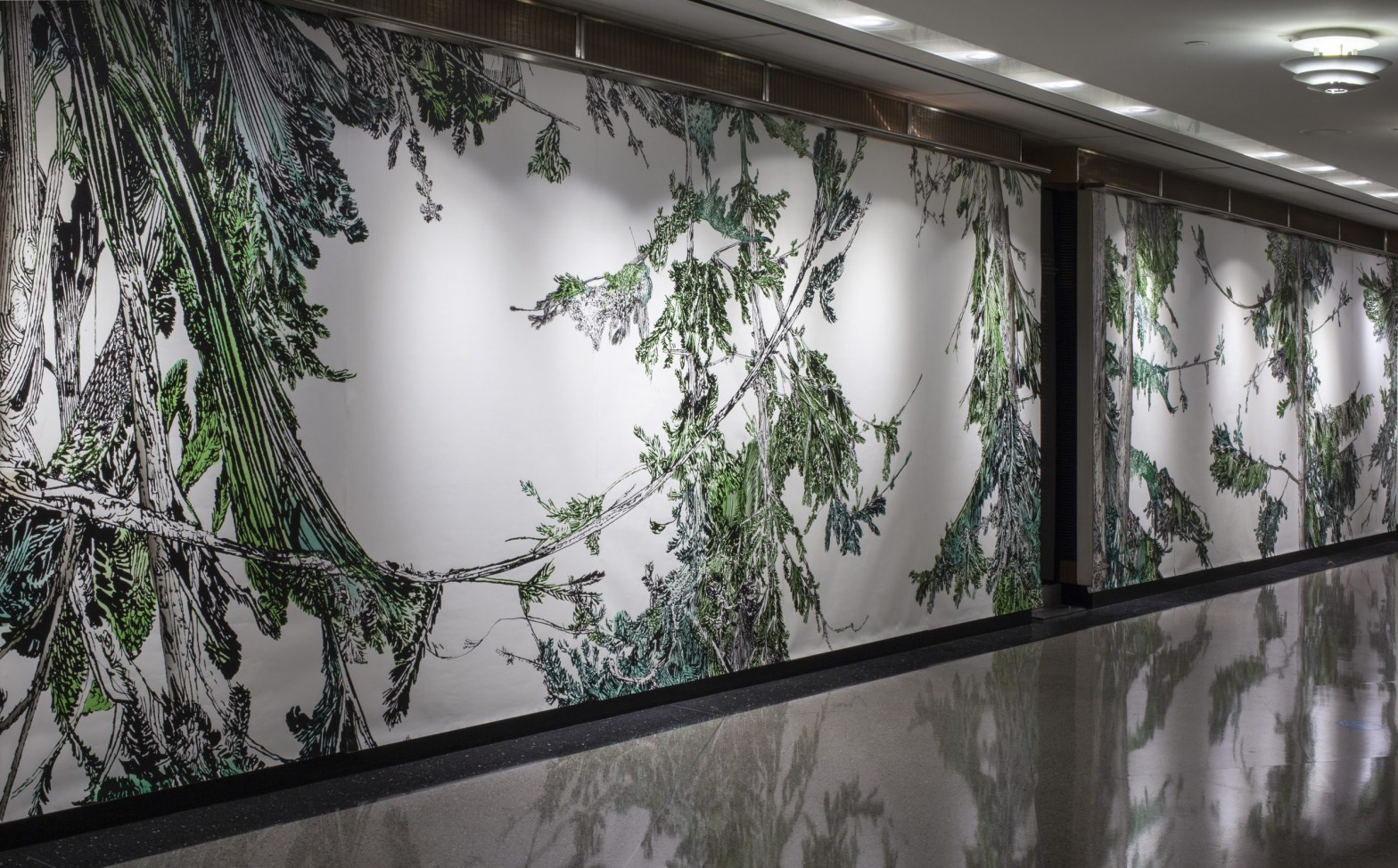In 2022, Riccardo Vecchio’s 42-foot installation 31 Degrees opened at the Brooklyn Public Library’s Dweck Gallery. This past week, the freeform Italian art and design bimonthly Un Sedicesimo published a sampling of it. The freedom to produce content for Corraini Editions‘ publication gave Vecchio the opportunity to introduce a grand plan for 31 Degrees as a broader multi-site public mapping and mural project drawing attention to ecological inequalities and environmental injustice through disparities in tree coverage. The endeavor sets out to work with different agencies, including the NYC Department of Parks & Recreation, and organizations like the community based Greenpoint Tree Corps, to plant trees in neighborhoods that need them most. At the Brooklyn launch of Vecchio’s Un Sedicesimo #75, he spoke to me about his ambitions for this green urban vision.
(Note: Vecchio is currently chair of SVA MFA Illustration as Visual Essay, replacing the late founder of the program, Marshall Arisman.)
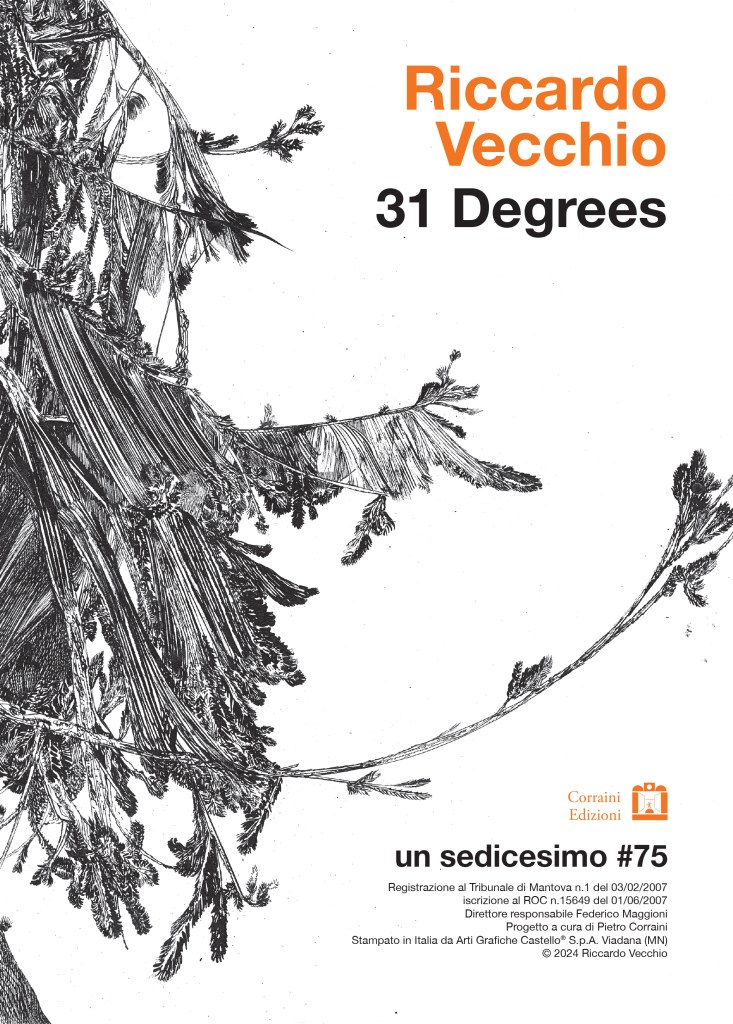
Would you explain the concept behind the drawings in your special issue of Un Sedicesimo?
31 Degrees is a participatory art project that sets out to draw attention to historically neglected populations and defunded neighborhoods in NYC, areas suffering from environmental and climate injustice that are disproportionately negatively impacted by heat, in an effort to aid local activism in their efforts to increase tree canopy in the areas that need it most. The project aims to partner with local grassroots organizations who are currently engaged in bringing attention to issues of systemic racism in their struggle to resolve environmental and climate injustices, as well as educational and cultural institutions.
Where does your project’s title come from?
The project’s title, 31 Degrees, takes its name from a collaborative study, part of a larger heat-mapping initiative in cities across North America, that heat-mapped parts of upper Manhattan and the Bronx, helping identify areas where environmental justice issues are a concern. The study found that due to low levels of tree coverage and green space, poorer neighborhoods, predominantly communities of color, are disproportionately negatively impacted by heat. Not only is heat distributed unequally in NYC, creating what is known as urban heat islands, its distribution follows other patterns of inequality such as race and income inequality. 31 Degrees references one particular day in July when the temperature difference varied by that amount from one upper middle class area in Manhattan to one of the city’s poorest communities of color in East Harlem and the Bronx.
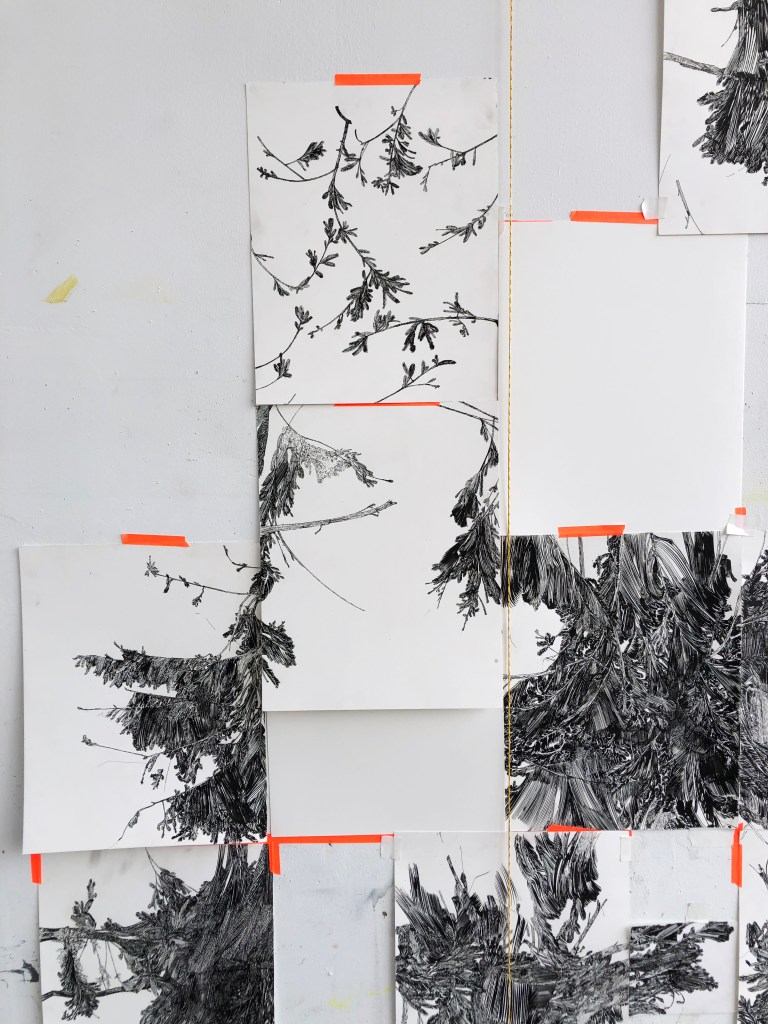
The drawings have a print quality …
The drawings themselves take inspiration from old masters such as Albrecht Dürer (1471–1528) and Albrecht Altdorfer (1480–1538), two artists considered the first landscape artists in the Western canon, who were painting trees and landscape without religious or other context, appreciating nature for its own sake. With this background, I created drawings of trees originally native to the New York area, like pines, fir and spruce, but which will become increasingly less widespread with the escalation of climate change.
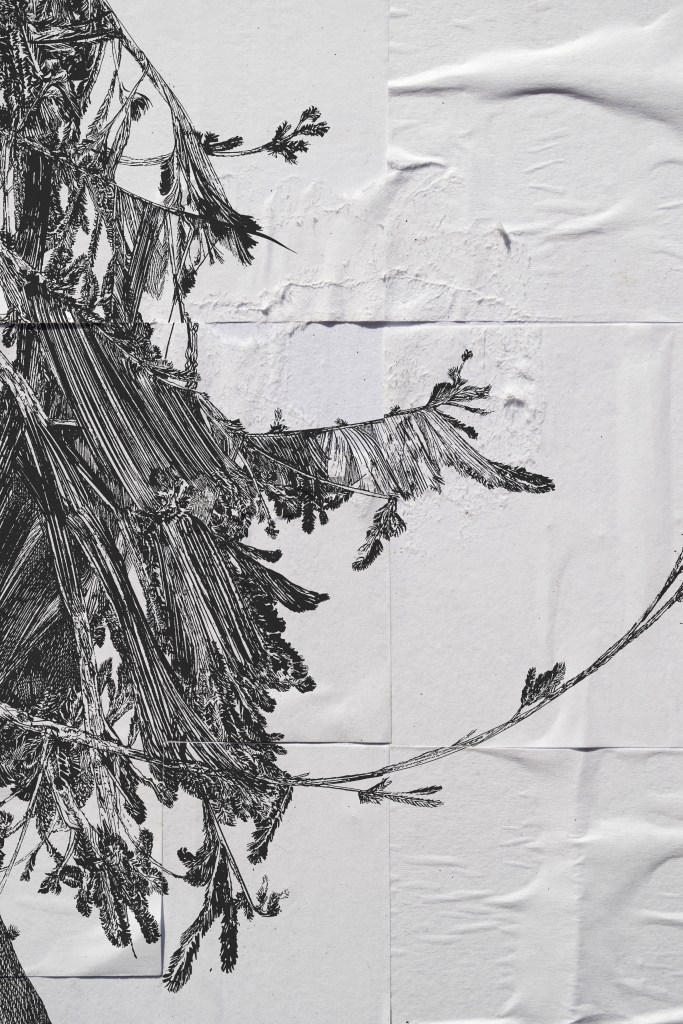
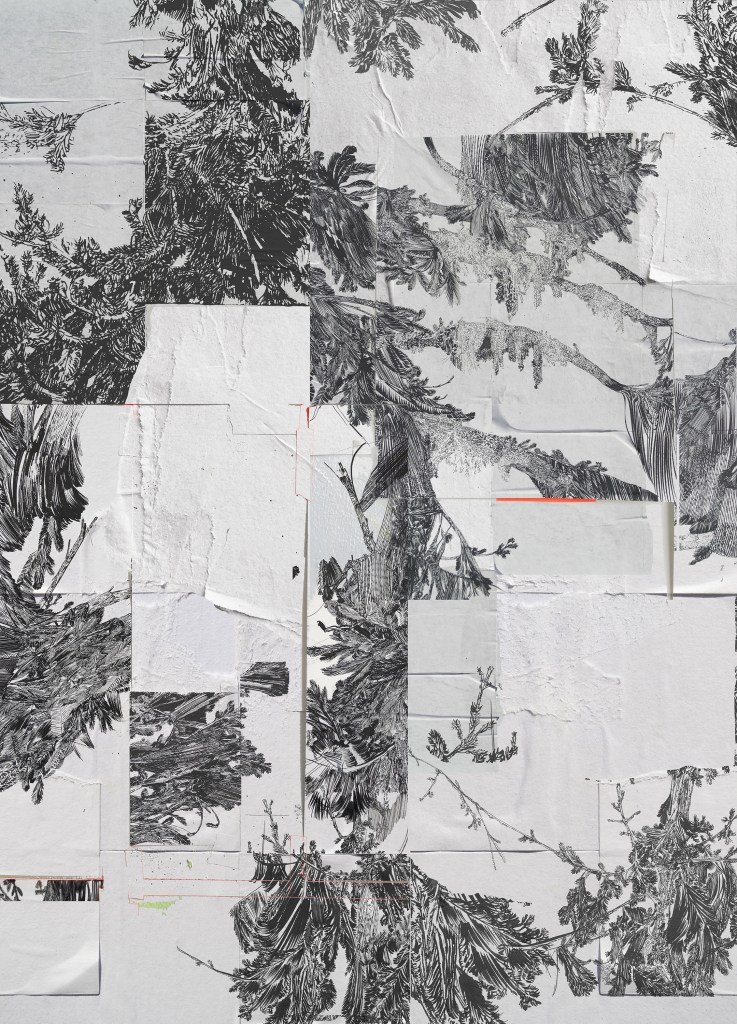
What are you thinking about scale?
The project anticipates the drawings will be translated into both large- and smaller-scale murals. For the more intimate murals, each drawing will be printed as a poster-sized sheet, and with the collaboration of the public, they will be wheatpasted onto donated wall space to create site-specific tree designs imagined by the participants themselves. The purpose of the murals is to underscore the lack of tree canopy in these neighborhoods, while at the same time adding some arboreal beauty with the drawings in areas where walls are more prevalent than trees.
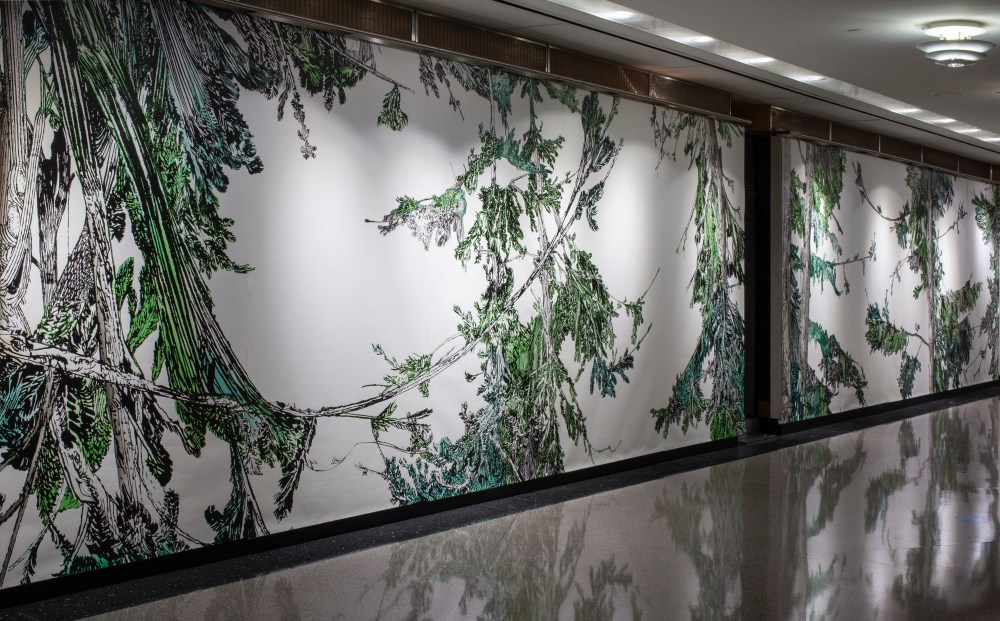
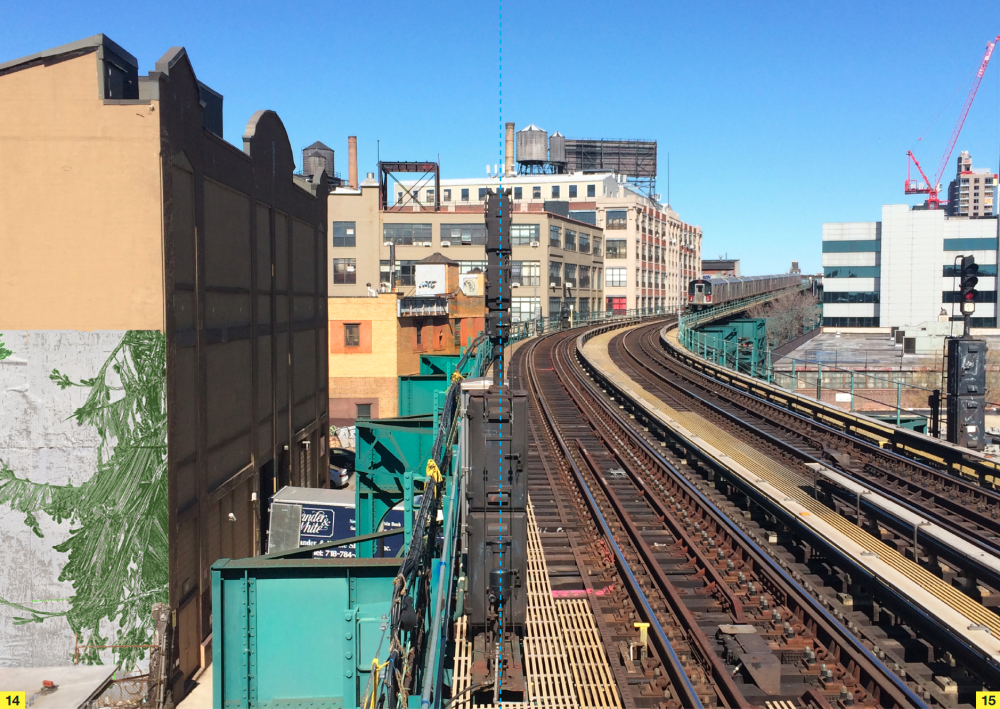
What is the significance of the mural to the cityscape?
For 31 Degrees, muralling is used as a vehicle to bring people together to participate in a creative process that provides the background for dialoguing around the parallels between climate inequality and income and racial inequality, and how we can raise our collective voices to correct this. The aim is to work together with organizations that are already present in the community focused on local issues, and through a hands-on creative process to encourage a sense of agency. But first, people must become aware of the issues, and then, that there are steps that can be taken to correct these problems. There are even newly enacted laws (both at the city and state level) that communities can call upon to hold our elected officials accountable.
What will it take to plant the trees?
On a practical level, only the NYC Dept. of Parks and Recreation can legally plant trees in the city. All requests for trees and all coordination must be approved and go through them. But, the real answer is, it takes the will and mobilization of the community to demand a healthier environment, one that they are legally, and according to the NYS Constitution, entitled to.
